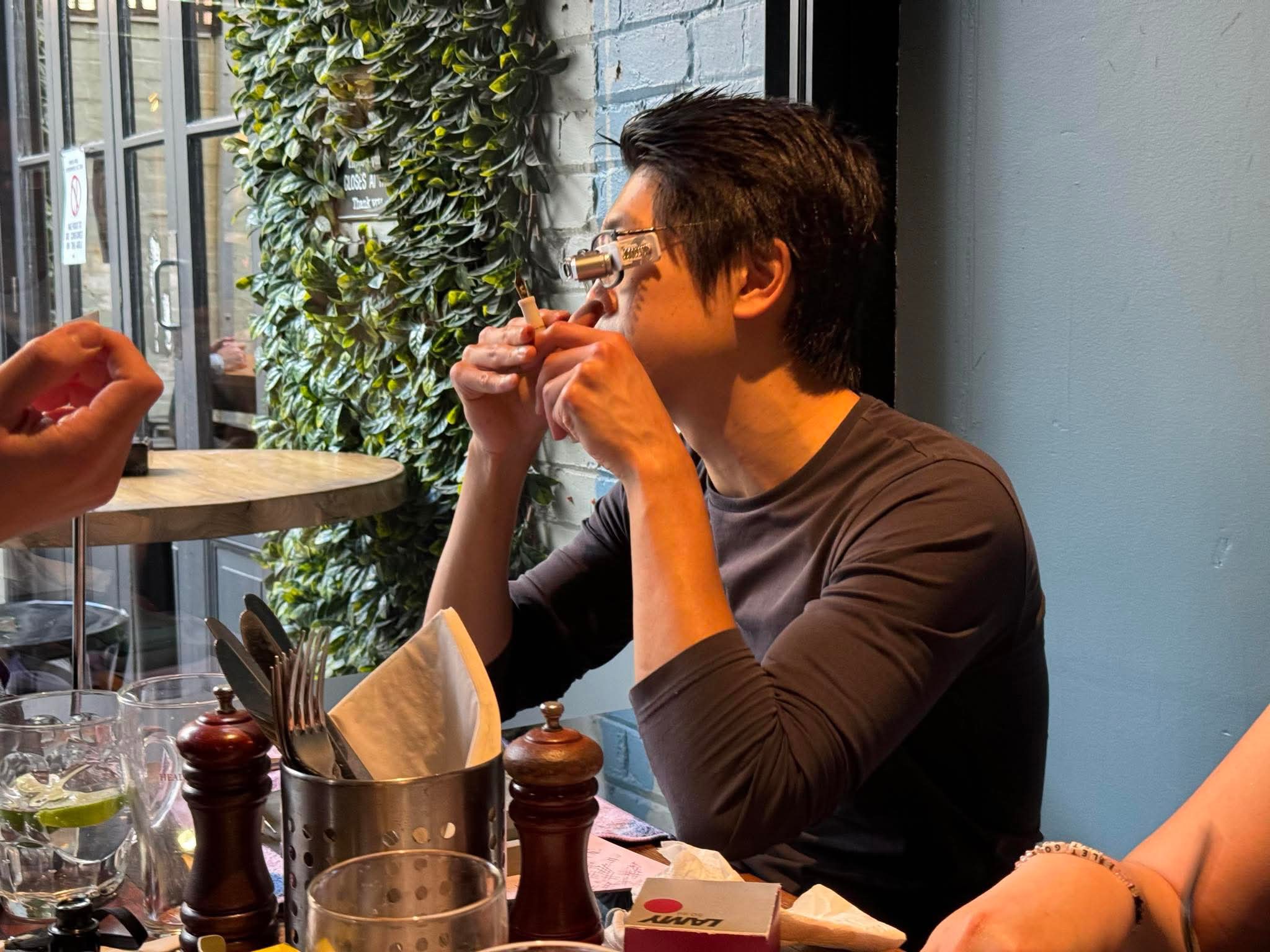Why Is My Fountain Pen So “Dry”/"Wet"? What To Do With Ink Flow Issues
- Daniel Zhang
- Oct 9
- 4 min read
A fountain pen should glide, not scratch. But sometimes it feels like it’s running out of ink mid-sentence, pale lines, hard starts, and a nib that feels like it’s dragging across the page. When that happens, your pen is probably “dry.”
A dry-writing pen can be frustrating, especially if you’ve spent good money expecting silky smoothness. The good news: there’s always a reason behind it, and usually, a fix.
Alternatively, sometimes a pen feels far too “wet”, the ink spreads too much, letters blur, and pages look like they’ve been rained on. If you’ve run into this, you’re not alone. A pen that lays down too much ink is a common frustration, especially for people writing on everyday paper.

What Does “Dry” Mean in Fountain Pen Terms?
A “dry” nib isn’t broken — it just lays down less ink than average. Some people actually prefer this for crisp, controlled writing on everyday paper. But too little flow can make a pen feel scratchy, pale, or inconsistent.
Why Do Pens Become Too Dry?
A few usual suspects cause stingy ink flow:
Tine spacing — The tiny gap between the nib tines might be too tight, restricting ink flow.
Feed alignment — If the feed isn’t seated properly or has poor contact with the nib, ink delivery is inconsistent.
Ink choice — Some inks are formulated “dry”, often quick-drying or office-safe types.
Paper absorbency — Smooth or coated paper doesn’t pull ink through as easily.
Nib geometry — Extra-fine or fine nibs naturally feel drier because they deliver less ink.
Quick Fixes You Can Try at Home
You can test a few simple things before sending it off for adjustment.
Try a wetter ink. Brands like Pilot Iroshizuku, Waterman, or Diamine tend to improve flow.
Flush the pen thoroughly. Old ink or residue can clog the feed and mimic dryness.
Change paper. Some notebooks resist ink flow — try fountain-pen-friendly paper.
Check your angle and pressure. Writing too lightly or at an odd angle can stop ink from reaching the page consistently.
When You Need Help
If your pen is still too dry even after experimenting, the nib may need adjustment. This is where a nib technician (like me at Inkcision) comes in. Common solutions include:
Opening tine spacing: Gently widening the gap between nib tines to control flow.
Feed adjustment: Aligning or modifying the feed by carving deeper channels to regulate supply.
Nib grind modification: Adjusting the tipping to remove slight inconsistencies that affect writing quality, e.g. baby's bottom
These are precise adjustments; it’s easy to make things worse without the right tools and experience.
The Bottom Line
A “dry” fountain pen isn’t a lost cause. It’s just out of tune. Once adjusted, the ink will flow evenly, the line will look richer, and the writing will feel effortless again.
If your pen feels like it’s always running out of breath, it might just need a little professional attention , not retirement.
What About "Wet" Pens?
In fountain pen language, a “wet” nib isn’t a disaster. It simply means the pen delivers a heavy ink flow. Some people like this, it makes inks look more saturated, shading is more dramatic, and the writing feels buttery. But for others, especially students or professionals using standard notebooks, it means smudges, feathering, and a messy writing experience.
Some fountain pen brands and models have a reputation in the community for being “wet writers” right out of the box. That doesn’t mean they’re bad, it just means they lay down a generous line of ink, which some people love (for shading and sheen) and others find impractical for everyday paper. Here are the usual suspects:
Known for wet nibs and generous flow:
Pelikan – Especially the M-series (M400, M600, M800). Their piston-fillers are famously smooth and wet, which shows off ink beautifully.
Visconti – Tends to have broad, juicy nibs that gush ink, though quality control can vary.
Aurora – Smooth nibs, often tuned wetter than Japanese brands.
Conway Stewart (modern revival pens) – Often set to write wet by default.
Some Montblancs – Especially broader nibs like B or OBB, though F and M can be moderate.
Quick Fixes You Can Try at Home
The main fixes for a "wet" pen are small changes from the user perspective.
Change inks: Switch to a drier ink brand or formula.
Use better paper: Fountain-pen-friendly paper (Rhodia, Midori, Tomoe River) is less absorbent and keeps ink sharp.
Adjust your angle and pressure: Writing with a lighter hand can reduce how much ink is pulled from the nib.
When You Need Help
If your pen is still too wet, there may be a nib issue that is contributing. This is where a nib technician (like me at Inkcision) comes in. The only issue that can easily be addressed is:
Closing tine spacing: Gently closing the gap between nib tines to control flow.
Nib grind modification: Grinding a larger tipping into a finer one, to reduce the surface area and thus amount of ink
The Bottom Line
A “wet” fountain pen isn’t broken—in fact, it is often a feature. There often isn't a fix that a nib technician can attend to, rather it's small adjustments from an ink and paper perspective that tailors the pen to each individual writer.





Comments